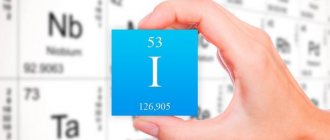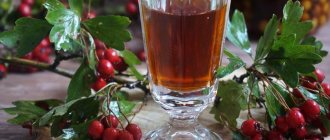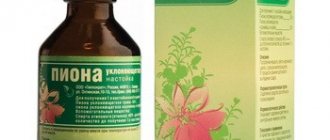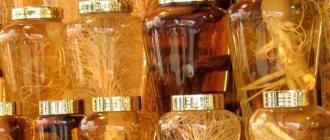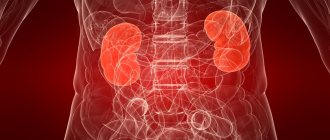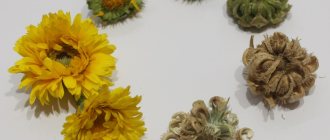Modern people quite often turn to traditional medicine when they are ill. They confidently believe that natural products and the method of their preparation cannot cause harm. People think that traditional methods of treatment only gradually restore health to the body. This opinion is wrong. Herbs and elixirs should be treated with the same caution as other serious pharmaceutical products. Each medicinal product has its own indications and contraindications. And if you don’t adhere to them, you can seriously harm your health.
In this article, we will consider such a natural elixir as hawthorn tincture, the benefits and harms of which can also make themselves felt.
Composition and release form
Hawthorn alcohol tincture is available in glass bottles with a screw cap and a convenient dosage device - a dropper or sleeve. The volume of bottles is from 25 to 100 ml. To protect against damage during transportation, each bottle is packaged in an opaque cardboard box.
The approved recipe composition of the tincture is as follows:
- 100 grams of hawthorn fruit;
- 1 liter of ethyl alcohol.
The strength of the hawthorn tincture can range from 50 to 70 degrees. Most often, tinctures with a strength of 50 degrees are sold in pharmacies. Stronger alcohol solutions are produced for medical and pharmacological institutions.
In appearance, the finished medicine is a transparent liquid, colored in light brown, yellow or reddish tones. The intensity of the color depends on the raw materials used and the color of the berries. It is not recommended to keep the finished medicine in the light, at temperatures above 20 degrees and in rooms with high humidity. Hawthorn tincture should be stored in a dry and dark place.
The raw material for making the tincture is a perennial shrub with clusters of fleshy, sweetish fruits with a slight astringent taste. Hawthorn blooms in summer, amber or red berries ripen in late autumn, by September - October. The plant is extremely unpretentious and grows in almost all climatic zones of Russia, except the Far North, and on almost any soil, preferring clay, in moderate and high humidity.
Despite their pleasant taste, hawthorn berries are of no culinary value and serve mainly as a delicacy for children and birds wintering in the middle zone. In folk medicine, berries, fragrant inflorescences, and hawthorn bark are widely used. Decoctions of berries and leaves are used in cosmetic and bath procedures to normalize the functioning of blood vessels and for digestive disorders.
Alcohol tinctures have a more pronounced medicinal effect and are used for diseases of the heart, nervous system, and hypertension. The use of high concentration alcohol tinctures may have a number of contraindications and cause allergic reactions.
Despite the fact that the medicine is available over the counter, before using alcoholic preparations based on hawthorn, it makes sense to consult a doctor and get a recommendation.
Harvesting hawthorn
For harvesting, raw materials should be collected from healthy plants without mold, dry branches and pests growing away from highways and the city.
Fresh hawthorn
Freshly picked fruits can be stored in the refrigerator on the fruit and vegetable rack in a ventilated tray. Berries should not be washed before storage - it is better to do this immediately before consumption. This method allows you to preserve hawthorn for several weeks or more.
Freezing
The berries should be sorted, washed and dried, then placed in a plastic bag or container and placed in a deep-freeze freezer (-18 C). Berry puree is frozen in the same way.
Frozen fruits retain all their properties for 1 year. When frozen, tannins are destroyed and the berries become less tart. Repeated freezing of berries is unacceptable, so it is better to harvest hawthorn in portions, in small bags.
Drying
Dry raw materials can be bought at a pharmacy, but it is better to prepare them yourself, starting from the end of September until the frosts. Ripe fruits are bright red, orange or yellow.
- Sort the berries, rinse and dry, arrange in one layer on a wire rack or baking sheet and place in a well-ventilated place. Hawthorn dries naturally within 5-7 days. You can dry the fruits in an electric dryer at temperatures up to 60 C or in an open oven, setting the temperature to 30 C. Dried fruits lose 3-4 times in volume and weight, acquire a specific smell and bitter taste.
- Corymbose inflorescences and buds are also suitable for harvesting, but the ovary is not. Hawthorn blooms in late May-early June: profusely, but not for long, only 4-7 days. Dry in ventilated attics.
Dry raw materials are stored in glass jars or canvas bags. Dried fruits and flowers retain their properties for 2 years - this is official data, but traditional healers claim that the period is much longer, up to 8 years.
Hawthorn jam
Numerous jam recipes involve boiling the berries, during which most of the beneficial substances are destroyed. Rather, such products are a delicacy rather than a medicine.
Infusion for long-term storage
This is a useful analogue to compotes that require boiling the berries. Dried flowers are mixed with boiling water in a 1:1 ratio (1 glass of raw material per 1 glass of water), left for 30 minutes, cooled, filtered and poured into sterile jars, then rolled up.
Hawthorn wine
A useful product that, when consumed in moderation, protects against colds, maintains the tone of coronary vessels, accelerates metabolism, and helps in the treatment and prevention of neuroses. Recommended for cholesterol (high blood levels).
Pre-make the starter: about 70 gr. Place unwashed raisins in a glass bowl and add 50 grams. sugar and 200 ml water. Cover with a cloth and leave warm. The starter is ready when it starts to foam, sizzle and smell slightly fermented.
Frozen, unwashed hawthorn fruits (this is important) weighing about 2.5 kg are placed in a clean and dry sterile glass container, filled with syrup obtained from 5 liters of water and 500 grams. sugar and introduce the starter. It is important that there is about 25% free space for gases to escape. Place in a room with a temperature of 18-24 C, put on a glove pierced in several places. After 3 days, drain 500 ml of wort, dilute 1 kg of sugar in it and add it again to the container with wine. After 7 days, filter the wine, add 500 g. sugar and stand for another 30-35 days. When the wine stops fermenting and emitting gas, it becomes transparent - it can be consumed. The output is about 5 liters of wine, which should be packaged in clean bottles and placed in a cellar for storage (good for 3 years). Take 100 ml 1-2 times a day.
pharmachologic effect
Hawthorn leaves and fruits have mild antiseptic and bactericidal properties. Steamed leaves were used in bath compresses to facilitate the release of phlegm. In Rus', hawthorn leaves were part of a gynecological herbal complex used after obstetrics for relaxation and restoration of the body after heavy stress.
The general pharmacological effect of hawthorn tincture is sedative, antispasmodic, vasodilator, and reduces increased heart rate. Use is recommended for neuroses, menopausal changes, hypertension of various types of origin. Hawthorn improves cerebral blood supply, reduces the risk of stroke by relieving vascular spasms, and improves the functioning of the brain and central nervous system.
Prophylactic administration of the tincture has been successfully used to prevent atherosclerosis.
Plant natural flavonoids contained in fruits and organic acids are perfectly soluble in alcohol and are most easily absorbed by the digestive system. Alcohol facilitates easier passage of beneficial components through the walls of the esophagus, stomach and intestines.
An incomplete list of components contains hyperin, vitexin, quincerin, hyperoside, citric, caffeic, ursulic acids, active pectins and vitamins of groups A, B, C, E, K.
The medicine helps normalize blood supply during vascular spasms. The tincture has a selective vasodilating effect and is indicated for atherosclerosis, narrowed blood vessels, and vascular dystonia. For the venous circulatory system, the effect is manifested in strengthening the walls of the veins.
Chemical composition of the tincture
The medicine is made from two components - hawthorn fruit extract and ethyl alcohol. The pharmaceutical preparation contains most of the chemical elements found in the fresh berries of the plant. Namely:
- organic acids and essential oils;
- glycosides;
- vitamins A and E;
- flavonoids;
- choline and trimethylamine;
- ascorbic acid;
- potassium;
- subgroup B vitamins;
- acetylcholine;
- sorbitol;
- magnesium and vitamin K;
- tanning components.
Hawthorn in alcohol should not be drunk unless indicated; it is harmful to the heart.
Ursolic acid in the composition deserves special mention. It has a pronounced cardiac stimulating, anti-inflammatory and hepatoprotective effect and is largely responsible for the medicinal value of the drug.
Indications for use
Indications for the use of hawthorn tincture as a therapeutic, therapeutic or prophylactic agent are determined by a doctor. Most often, the medicine is prescribed for coronary heart disease and insufficient myocardial function.
If you decide on your own that you need to drink a natural sedative, restorative, start taking half the usual dose. This is enough for a therapeutic effect.
Main indications for use:
- vasospasm;
- heart failure;
- arrhythmia;
- elevated cholesterol levels;
- rehabilitation after serious illnesses;
- neuroses and increased excitability;
- increased intellectual load.
The tincture should be used with caution for depression and fatigue. If you are prescribed antidepressants, you should discuss with your doctor the benefits and possible harms of additional intake of hawthorn.
How to drink hawthorn tincture
To prevent hawthorn tincture from causing harm for high blood pressure, it must be consumed in accordance with strict rules. The norms of use depend on the specific disease for which the medicine is used.
How to take hawthorn tincture with alcohol correctly
There are several general rules for the safe use of alcohol:
- The use of the drug is started gradually, with a slow increase in dosage.
- Hawthorn in alcohol is taken on an empty stomach shortly before meals, about half an hour.
- Treatment is continued for at least a month, and depending on the pathology, the course of use may be longer.
- When treating cardiovascular diseases, the drug is diluted in a large spoon of drinking water before use.
Attention! Hawthorn tincture can bring not only benefits, but also harm. Before using it, you should consult your doctor to avoid possible negative effects.
How many drops of hawthorn tincture can an adult take?
The initial dosage of the medicine should be no more than 20 drops three times a day. If long-term treatment is planned, then the volume can be gradually increased to 30 drops, and the frequency of administration - up to four times a day.
How to take tincture of hawthorn, peony, motherwort, valerian
A mixed remedy of several medicinal tinctures is taken mainly before bedtime. The drug has a pronounced calming effect, helps to distract from anxious thoughts. The dosage should be a small spoon; it is advisable to dilute the medicine with 30 ml of warm, clean water.
Hawthorn tincture should not be drunk before driving or responsible activities.
How to take hawthorn tincture for high or low blood pressure
The main indication for hawthorn tincture is high blood pressure due to hypertension. In this case, you need to take the drug according to the standard algorithm. A homemade or store-bought pharmaceutical preparation is taken three times a day on an empty stomach, 20 drops, diluting it with a large spoon of clean water, and over time the dosage is increased to 30 drops.
For hypotension, hawthorn is usually not used; it is more likely to cause harm. For medicinal purposes, doctors recommend using berry-based water products that can raise blood pressure.
How to take hawthorn tincture for bradycardia
For bradycardia, or slow heart rate, alcohol-based medicine is rarely used; it can lead to worsening negative symptoms and weakening of cardiac activity. But in some cases the drug must be used for other indications, and then it becomes necessary to select safe dosages.
Hawthorn tincture should be used in minimal quantities for a slow heart rate. Usually take no more than 10-12 drops three times a day, diluting with cold water, and the treatment is continued for 10-14 days. Throughout the entire period, you should carefully monitor your well-being so that if alarming symptoms appear, you should stop using the drug.
How to drink hawthorn tincture for cardiac arrhythmia
For arrhythmia, hawthorn in alcohol can bring both benefit and harm. For medicinal purposes, it is recommended to use 15 drops of the drug as a single dosage, the standard dosage frequency is three times a day. If no side effects are observed, the volumes can be gradually increased to the usual 30 drops.
Instructions for use
Use the tincture as a medicinal tonic during periods of intense physical and intellectual stress, to strengthen the immune system and increase the overall tone of the body during periods of increasing risk of colds.
Recommended as a sedative for stress, overload, and depression.
Standard dosage
To prepare the medicine, drop 30-40 drops into a glass of water and stir. The resulting solution can be used separately or added to tea.
The diluted infusion is taken 3 times a day half an hour before meals. The recommended amount is one third of a glass. You can prepare the solution for the whole day in advance and store it in the refrigerator in a container with a lid.
Can I take it during pregnancy?
During pregnancy and lactation, the effect of the tincture has not been clinically tested. Alcohol tinctures are generally not recommended in the first trimester of pregnancy and during breastfeeding.
Hawthorn tincture, despite its naturalness and environmental friendliness, is a powerful remedy. Follow the doctor's recommendations in this case and do not be excessively active.
Dosage forms
At pharmacy points of sale you can buy hawthorn in different versions, which are sold without a prescription. They come in the form:
- whole fruits in filter bags;
- syrups and balms;
- alcohol tincture of hawthorn;
- tablets;
- marmalade.
Hawthorn tinctures. Photo: ru.publika.md
Along with the considered dosage forms, we can also highlight premium hawthorn with potassium and magnesium, which, according to reviews, is a highly productive dietary supplement. Cardiologists recommend it to their patients, due to its high cardio-efficacy and harmlessness. This is a dietary supplement. Particularly relevant for older people. To obtain a lasting therapeutic result, you need to drink 2 pills twice a day. This is enough to support the body.
Despite the wide useful range of hawthorn tincture, its main purpose is a beneficial effect on cardiovascular functionality and the central nervous system. Regardless of the type of tincture, homemade or pharmacy, medicinal dosages must be prescribed by a doctor.
Contraindications
- Contraindications include allergic reactions and individual intolerance.
- For stomach ulcers, exacerbations of chronic diseases, gastritis, hawthorn tincture can cause intestinal irritation and digestive upset.
- Do not take the infusion if you have low blood pressure.
- If you have diabetes and other systemic metabolic diseases, you should be especially careful and listen to your doctor’s advice. Taking the infusion can help normalize blood sugar, but in some cases, unwanted side effects are possible.
- It is not advisable to take hawthorn tincture during the first trimester of pregnancy. Any alcohol infusions can harm a child.
- Concentrated alcohol tinctures are not recommended for use by children. For children under 12 years of age, you can prepare a relaxing and soothing decoction of the fruit or syrup.
- Taking undiluted, pure infusion is strictly contraindicated.
Do not take hawthorn tincture at your own discretion, without medical prescription. Hawthorn tincture is a medicinal product with significant medical effects. Taking medication for non-medical purposes and without the advice of a doctor may have undesirable health effects.
How to store the product
The place allocated for the product should be protected from sunlight, the room temperature should be from 15 to 25 degrees. Be sure to keep the liquid away from small children as they may be attracted to the color. This medicine is not a toy and should not be drunk like water. Always close the container tightly. It’s even better if the hawthorn is placed in a separate case.
Surely, you are convinced that hawthorn tincture can help the body. Almost any disease can be cured once or twice if you start taking berries diluted in water, alcohol tincture, or simply make juice. Be healthy!
Side effects
With long-term use of the medicine and when taking a large dose at a time, a decrease in blood pressure, drowsiness, intestinal disturbances, and interruptions in heart function are possible.
Nausea, vomiting, bloating, and colic if intolerant or if the recommended dose is exceeded are also possible.
Hawthorn infusion is a potent remedy. To avoid side effects, do not exceed the dose. Poisoning is unlikely, but a strong drop in blood pressure is possible if, for example, you immediately drink a standard 30 ml bottle.
Use of hawthorn fruits, flowers and leaves
The best way to consume hawthorn is to eat the fresh fruits of the plant.
However, the fruiting season is quite short-lived, and the need to maintain the health of vital systems and organs is constant. If possible, it is worth making several preparations from leaves, flowers and fruits of hawthorn at home. To do this you will need:
- flowers, fruits or leaves of hawthorn;
- alcohol;
- basic knowledge in preparing infusions and a couple of proven recipes.
At different periods of time (flowering, fruit ripening) you need to collect source material. Then select a resealable container (jar with a lid, bottle, etc.). Place fresh fruits (flowers or leaves) mashed to a pulp into it and add alcohol. If the infusion is made from dried components, the filler is poured without first kneading the base. The proportions of alcohol and hawthorn depend on whether fresh or dried materials are used. The mixture is infused for two weeks to 30 days. Recipes for making decoction and tea from rose hips and sage.
Analogues of the product
There are no exact chemical analogues of the drug. Hawthorn tincture combines calming, antiseptic, sedative, antispasmodic and cardiological properties and contains a unique set of essential oils, tannins, vitamins, complex organic acids that are actively involved in metabolism.
Motherwort tincture has a similar sedative effect. Antiseptic properties can be replenished with nettle decoctions. Corvalol or Validol can cope with rapid heart rate.
External use of hawthorn tincture
The beneficial properties and contraindications of hawthorn tincture appear not only when used internally, but also when used externally. A strong product can be used to rub muscles with sprains and injuries.
Hawthorn tincture has a warming effect when applied externally
The tincture is also used for joint ailments. If you apply it as a compress to the sore spot and leave it for half an hour, the alcohol preparation will help relieve inflammation and local swelling. The product can be used to treat wounds and cuts for disinfection, and can be used to spot-lubricate pimples.
The nutritional value
Hawthorn fruits are rich in biologically active substances, vitamins, micro- and macroelements. The berries of some plant species are not inferior to carrots in carotene content. They contain many active substances, such as the bitter substance krategin, fatty oils, flavone glycosides, and pectins. The composition also contains various organic acids: citric, ursolic, caffeic, chlorogenic, oleanolic . Ursolic acid occupies a special place in the list of useful substances of this plant, as it has vasodilating properties, has anti-inflammatory and antiseptic effects, serves as a pacemaker and hepatoprotector, has an antitumor effect and a diuretic effect. This acid also stimulates the regeneration of skin cells. The fruits also contain tannins, choline, tannin, and fructose.
If we consider the nutritional value of the fruit, the calorie content of 100 grams of berries is 58.5. Nutrient Content:
- 0.8 g proteins;
- 14 g carbohydrates;
- 82.5 g water;
- 3.5 g dietary fiber;
- 2.75 g of ash.
Also, 100 grams of fruit contain the following vitamins:
- E - 2.2 mg;
- C - 90 mg;
- beta-carotene - 14.1 mg.
Indicators of mineral composition in 100 grams of berries (macro- and microelements):
- potassium - 13.1 mg;
- calcium - 3.0 mg;
- manganese - 1.0 mg;
- iron - 0.04 mg;
- magnesium - 0.04 mg;
- copper - 0.30 mg;
- zinc - 0.08 mcg;
- cobalt - 0.38 mcg;
- molybdenum - 7.2 mg;
- chromium - 0.02 mg;
- aluminum - 0.12 mg;
- selenium - 9.9 mg;
- nickel - 0.1 μg;
- strontium - 0.25 μg;
- iodine - 0.06 mg;
- boron - 2.5 mcg.
Important!
Beneficial properties of hawthorn and the conditions it treats
Thanks to all of the above components, when consuming hawthorn, the permeability of the walls of blood vessels and capillaries is reduced, the blood vessels of the brain are toned, and free radicals that enter the body from an unfavorable environment are neutralized. The level of glucose and cholesterol in the blood also decreases, and the risk of developing senile cataracts decreases. Hawthorn has a powerful antitumor, wound-healing, choleretic, sedative, anti-inflammatory and antiseptic effect .
Hawthorn may help alleviate the following conditions::
- constriction of blood vessels in the brain;
- vegetative-vascular dystonia;
- myocardial infarction;
- nervous excitability in stressful situations;
- decreased immunity due to serious illnesses;
- strengthening the nervous system during burnout syndrome;
- high blood pressure;
- myocardial infarction;
- diabetes;
- epilepsy;
- inflammation of the gastrointestinal tract;
- avitaminosis;
- angioneurosis;
- hyperthyroidism;
- tachycardia;
- hypertension;
- headache;
- impaired metabolism;
- bile stagnation;
- rheumatoid arthritis.
Video about the benefits of using berries
Not only the berries of this shrub have medicinal properties - traditional medicine also uses the flowers, leaves, seeds and bark of the plant . Flowers contain a lot of essential oils, flavonols, such as quercetin, hyperoside, vitexin. As in berries, flowers contain ursolic, caffeic, oleanolic acids, as well as trimethylamine, choline and acetylcholine.
The leaves are also rich in quercetin, carotene and vitamin C, as well as triterpene saponins and tannins . Infusions are prepared from flowering and leafy (herbal) raw materials, which increase blood circulation in the vessels of the brain and coronary vessels, have a beneficial effect on the heart muscle, eliminate arrhythmia and tachycardia, normalize blood pressure, lower cholesterol levels, as well as the permeability of capillaries and blood vessel walls. vessels.
Hawthorn seeds also have beneficial properties . They contain a lot of essential oils that are highly soluble in alcohol. They have antiviral, antibacterial, astringent, tonic and immunomodulatory properties. Alcohol tinctures are prepared from them, which help with dysentery, atherosclerosis, diabetes, obesity, epilepsy, and high blood pressure.
The bark and branches contain the glycoside esculin, which has a beneficial effect on the antithrombic properties of blood serum: it helps to increase the production of antithrombin in blood vessels and increase capillary resistance.
For men
The healing effect of hawthorn on the male body is expressed in the following:
- antitumor effect in prostatitis and prostate adenoma;
- improving blood supply to the genital organs;
- increased secretion production by the prostate gland;
- normalization of sexual function.
Did you know?
In the old days, it was believed that hawthorn scared away evil spirits, so its branches were hung above the entrance to the house.
For women
For women's health, hawthorn is especially indicated for the following conditions and diseases:
- climacteric syndrome during menopause;
- symptoms of premenstrual syndrome during premenopause;
- insomnia before, during and after menopause.
Can it be consumed internally as alcohol?
The advantage of hawthorn tincture is that this plant is quite easily tolerated by the body and is non-toxic, so it can be taken for a long period. However, you cannot use a medicine made on the basis of an alcoholic extract from fruits 1:10, like regular alcohol. Too high a concentration of nutrients can cause side effects such as:
- drowsiness;
- bradycardia;
- acute arterial hypotension.
But a homemade hawthorn tincture, in which the plant is used in smaller proportions, can be consumed as table alcohol.
Recipe for vodka with rose hips and galangal
Ingredients
| Component | Quantity |
| Vodka 40% | 500 ml |
| Dried berries | 1.5 tbsp. l. |
| Dried rose hips | 1 tbsp. l. |
| Shredded galangal | 1/2 tsp. |
| Syrup: sugar+water | 1 tbsp. l. |
The drink is made as follows:
- All plant components are placed in the infusion container and vodka is poured.
- The container is tightly closed and moved to a warm place, protected from sunlight, for 21 days. It needs to be shaken from time to time.
- After the expiration date, the liquid must be filtered through cheesecloth and squeeze out any raw materials that have gotten into it.
- On fire, make a standard syrup from sugar and water, for example in a spoon, and pour into the total mass.
- Close the container tightly, set aside for a couple of weeks to normalize the taste, and the drink is ready.
Hawthorn tincture is one of the traditional alcoholic drinks that has been very popular for centuries. This is no wonder, because it combines excellent taste and aroma with a wide range of beneficial properties. In addition, the organoleptic properties of the berry make it possible to use it in combination with other ingredients, complementing and changing both the flavor and aroma and beneficial properties of the infusion.
The benefits of hawthorn for overwork and stress relief
The medicinal properties of flowers and fruits are used to prevent the health of the heart and blood vessels, normalize blood pressure, and cope with nervous fatigue.
Constant tension and concentration during the working day tires the nervous system, causes increased blood pressure, increases heart rate, irritability, headaches, and disrupts sleep.
Hawthorn fruits are useful because they reduce the excitement of the nervous system, dilate blood vessels, improve cerebral and cardiac circulation, and increase the supply of oxygen.
To fall asleep better, sleep soundly, and wake up rested:
- In the morning, brew some berries in a thermos.
You can take ready-made tea at night, with honey.
- Brew 1 tsp. berries with a glass of boiling water, leave in a thermos for 1 hour.
Take 3 tbsp. 3-4 times a day an hour before meals.
Tea made from hawthorn and St. John's wort berries has the ability to eliminate anxiety and irritability:
- Mix crushed fruits and herbs in equal quantities, brew 1 tbsp. mixture with a glass of boiling water.
After 15 minutes the tea is ready.


